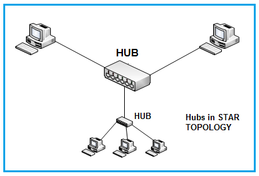Hub vs. Switch: Key Differences Explained
Advertisement
This article explains the differences between network hubs and switches, two common networking devices. Let’s dive in!
The Hub: A Simple Broadcast Device
A network hub, also known as a repeater, is a relatively basic broadcast device. Hubs don’t manage the traffic passing through them. Instead, they simply broadcast each incoming packet out to all ports, except for the port it arrived on. Think of it like yelling a message to a room full of people – everyone hears it, regardless of whether it’s meant for them.
Because every packet is broadcast to all ports, packet collisions are a frequent issue. These collisions significantly reduce network performance and hinder the smooth flow of traffic. For more detailed information, refer to resources on hub basics and hub types.
The Switch: A Smarter Approach
A network switch operates more intelligently. It examines the incoming packet and forwards it only to the appropriate destination port. It doesn’t broadcast the packet to all ports/nodes like a hub does.
This targeted approach significantly reduces the chances of packet collisions, leading to improved network performance. The functions of switches (and routers) are more complex.
Hub vs. Switch: A Comparison Table
Here’s a table summarizing the key differences between hubs and switches:
| Feature | Hub | Switch |
|---|---|---|
| Data Transfer | Transfers data to all connected ports | Transfers data only to the addressed port |
| OSI Layer | Operates at Layer 1 (Physical Layer) | Operates at Layer 2 (Data Link Layer) or Layer 3 (Network Layer) |
| Duplex Mode | Half-duplex mode | Full-duplex mode |
| Cost | Cheaper than switches | More expensive compared to hubs |
| Port Range | Typically available with 4 to 24 ports | Typically available with 4 to 48 ports |
Advertisement
 RF
RF

